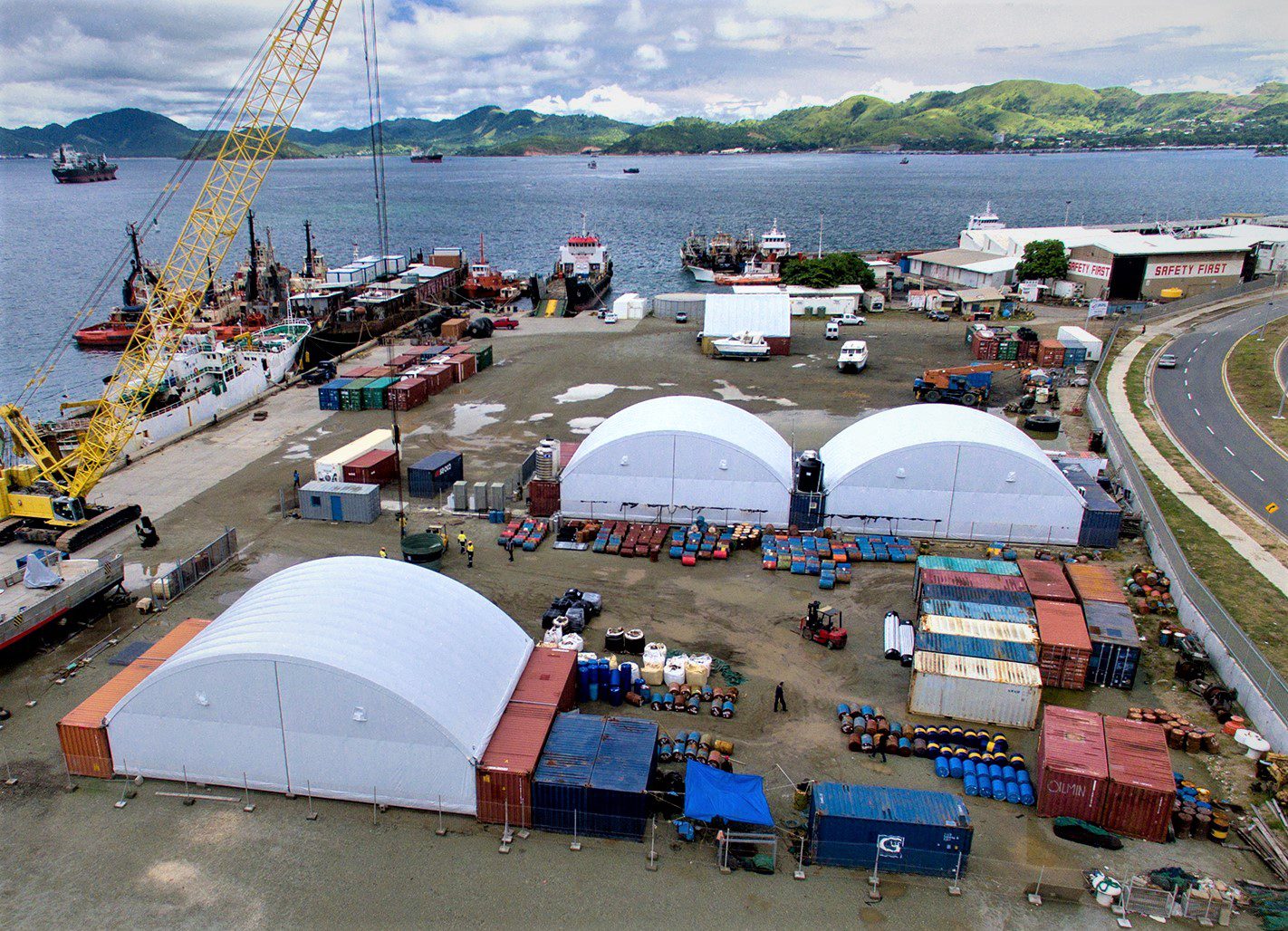End Walls vs. No End Walls in Portable Dome Shelters
- January 24, 2025
- Posted by: Container Domes
- Category: Blog

When it comes to maximising the functionality of your portable dome shelter, one of the most important decisions you’ll need to make is whether to include end walls. At Container Domes Australia, we’re often asked about the benefits and considerations of different end-wall configurations. Let’s explore your options to help you make the best choice for your specific needs.
What are end walls?
First, you need an understanding of end walls. End walls are the vertical structural elements that can be added to either or both ends of your dome shelter, transforming it from an open-ended canopy into a more comprehensive enclosed space. These components can be customised to provide varying levels of protection and accessibility.
We’ve engineered our end wall solutions to integrate seamlessly with our dome structures, offering options that include half end wall or full end wall configurations. The installation process is streamlined through our innovative end wall base rails system, which can be self-supporting, eliminating the need for concrete footings while still maintaining full compliance with Australian wind rating requirements.
Understanding your end wall options
The beauty of portable dome shelters lies in their versatility, and end wall configurations are no exception. Each option – full end walls, half end walls, or no end walls – comes with its own set of advantages, and the right choice depends on your specific application and site requirements.
The case for full end walls
Full end walls provide total enclosure of your dome shelter, offering maximum protection from the elements. When installed with our robust end wall base rails, these structures create a fully sealed environment that’s valuable in harsh Australian conditions.
Full end walls offer several benefits:
- Enhanced protection for valuable equipment and materials from dust, rain, and wildlife
- Improved climate control capabilities, especially important for temperature-sensitive storage
- Greater security for stored items, with the option to add lockable access points
- Better control over internal conditions for workshops and maintenance facilities
Full end walls come with concrete pier hold-downs as standard. However, for clients using our Twistlock Bracket Mount System, we’ve developed a specialised twistlock full end wall option that enables complete installation without on-site hot works or container drilling.
Half end wall advantages
Half end walls represent an excellent middle-ground solution, providing partial protection while maintaining easy access and ventilation. This configuration is particularly popular in:
- Equipment maintenance areas where ventilation is crucial
- Loading zones requiring weather protection but frequent access
- Agricultural applications where airflow is essential
- Construction sites needing flexible access while maintaining some weather protection
The half end wall design, supported by our specially engineered end wall base rails, offers the perfect balance between protection and accessibility.
When no end walls might be your best choice
Sometimes, having no end walls is actually the optimal solution. This configuration is ideal for:
- Drive-through applications requiring constant vehicle access
- Temporary covered workspaces needing maximum accessibility
- Projects where maximum natural ventilation is essential
- Situations where quick installation and minimal components are priorities

Factors to consider when making your choice
When deciding on your end wall configuration, consider:
Climate and weather
The local weather conditions at your site should significantly influence your decision. For example, full end walls might be essential in areas prone to severe storms or dust, while more temperate regions might benefit from the increased ventilation of no end walls at all.
Access
Think about how you’ll be using the space. Will you need frequent vehicle access? Are you storing materials that require regular loading and unloading? The right end wall configuration should make daily operations more efficient.
Security
Full end walls with secure access points might be essential if you’re storing valuable equipment or materials.
Site layout and orientation
The position of your shelter relative to prevailing winds and surrounding structures can also impact your end wall decision. Consider how the shelter will interact with existing buildings and traffic flow patterns on your site.
Budget
While the initial cost is important, consider the long-term value and operational benefits of different end wall configurations. Factor in potential energy savings, maintenance costs, and operational efficiency, among other things.
If you need help choosing between end walls versus no end walls for your portable dome shelter, get in touch with our friendly team to find out more about your options.
Professional guidance when you need it
Our team understands that every project has unique requirements. Our in-house design team brings over 30 years of combined experience to help you select the perfect end wall configuration for your needs. Whether you’re setting up a mining maintenance facility in Western Australia or an agricultural storage solution in rural New South Wales, we’ll ensure your dome shelter meets all your operational requirements.
All our end wall options are:
- Engineered and certified for all Australian wind conditions
- Manufactured in Australia to the highest quality standards
- Backed by our comprehensive 10-year warranty
- Designed for easy installation and maximum durability
- Fully compatible with our modular dome shelter systems
Making your decision
Whether you choose full end walls, half end walls, or no end walls at all, your dome shelter will still deliver the premium quality and durability that Container Domes Australia is known for. The key is selecting the configuration that best suits your exact operational needs, site conditions, and long-term requirements.Ready to discuss your dome shelter requirements? Our team of professionals is here to help you make the right choice. Call us today to explore how we can create the perfect shelter solution for your needs or get a free quote for the right domes, end walls, or other accessories for your requirements.
